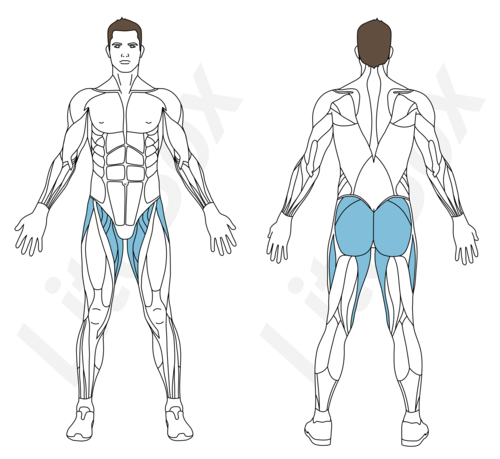
If you are looking for a simple yet effective workout to target your glutes, hips, and core muscles, then the fire hydrant exercise is a great option. This move is named after the way dogs lift their legs to urinate on a fire hydrant, but don't be fooled by its name. The fire hydrant exercise can be done anywhere, anytime, and by anyone, regardless of their fitness level.
What is the Fire Hydrant Exercise?

The fire hydrant exercise is a bodyweight exercise that targets the glutes, hips, and core muscles. It is a simple exercise that involves lifting one leg out to the side, just like a dog lifting its leg to urinate on a fire hydrant. This move is also known as the "hip abduction" exercise, as it involves the lateral movement of the hip joint.
How to Do the Fire Hydrant Exercise?

Here are the steps to perform the fire hydrant exercise:
- Start on all fours, with your hands directly under your shoulders and your knees under your hips.
- Engage your core muscles and keep your spine neutral.
- Lift one leg out to the side, keeping your knee bent at a 90-degree angle.
- Keep your foot flexed and your toes pointing down.
- Pause for a moment at the top of the movement, then lower your leg back down to the starting position.
- Repeat the movement on the other leg.
Try to perform 2-3 sets of 10-15 reps on each leg, or as many as you can do with good form.
What Muscles Does Fire Hydrant Work?

The fire hydrant exercise primarily targets the gluteus medius muscle, which is one of the three glute muscles located in the buttocks. This muscle is responsible for abducting the hip, which means moving the leg away from the center of the body. It also helps to stabilize the pelvis and prevent hip drop during walking, running, and other lower-body movements.
In addition to the gluteus medius, the fire hydrant exercise also works the gluteus maximus, which is the largest muscle in the buttocks. This muscle is responsible for hip extension, which means moving the leg back behind the body. It also helps to maintain an upright posture and prevent lower back pain.
The fire hydrant exercise also engages the core muscles, including the transverse abdominis, obliques, and erector spinae. These muscles help to stabilize the spine and pelvis during the movement, and improve overall posture and balance.
Benefits of Fire Hydrant Exercise

The fire hydrant exercise offers several benefits, including:
- Targeting the glutes, hips, and core muscles, which are important for posture, balance, and lower-body strength.
- Improving hip mobility and flexibility, which can reduce the risk of injury and improve overall movement quality.
- Strengthening the muscles that support the lower back, which can reduce the risk of lower back pain and improve spinal health.
- Engaging multiple muscle groups at once, which can increase calorie burn and improve cardiovascular fitness.
- Being a low-impact exercise that can be done anywhere, anytime, and without any equipment.
Tips for Performing Fire Hydrant Exercise

Here are some tips to help you perform the fire hydrant exercise with good form and maximum effectiveness:
- Keep your core muscles engaged throughout the movement, and avoid arching or rounding your back.
- Keep your head and neck in line with your spine, and avoid looking up or down.
- Keep your movements slow and controlled, and avoid swinging your leg or using momentum.
- Breathe deeply and rhythmically throughout the movement, and avoid holding your breath.
- Gradually increase the intensity and volume of the exercise over time, by adding resistance bands, weights, or more reps.
Conclusion
The fire hydrant exercise is a simple yet effective way to target your glutes, hips, and core muscles. It can be done anywhere, anytime, and by anyone, regardless of their fitness level. This move offers several benefits, including improved posture, balance, lower-body strength, hip mobility, and spinal health. By incorporating the fire hydrant exercise into your workout routine, you can achieve a stronger, healthier, and more functional body.